A look at the year’s best new noirs (with the usual disclaimer that noir can never quite be defined, which is really part of the appeal, but let’s all agree it has something to do with a journey into the moral abyss).
*
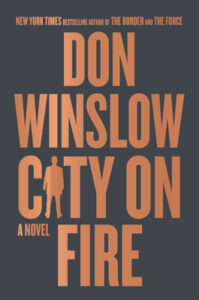
Don Winslow, City on Fire
(William Morrow)
In Don Winslow’s magisterial ode to the Iliad and the Aeneid, two crime families battle for New England after the appearance of their own Helen of Troy is a catalyst for full-scale conflict. Winslow’s work is at the pinnacle of modern crime writing, and City on Fire continues his run of powerhouse emotional noir. –MO

Kelly J. Ford, Real Bad Things
(Thomas & Mercer)
Ford’s 2017 novel, Cottonmouths, remains a standout noir, and she was back this year with a powerful story of a young woman who confesses to the murder of her stepfather. Rather than going to jail, she carries on with her life, moves away, starts over—because the police never actually found the body. Two decades later, the corpse turns up, and she’s forced to return to her hometown in Arkansas to reckon with her past and what’s left of her family. –DM

Amina Akhtar, Kismet
(Thomas & Mercer)
I’m a huge fan of Amina Akhtar’s cult classic debut, #FashionVictim, based on Akhtar’s experience working in the fashion magazine world. Her second novel skewers the wellness industry of Sedona (Amina Akhtar is now based in Arizona) and also includes a light supernatural touch that’s perfectly integrated into the thriller arc as a whole. In Kismet, a young desi woman follows her #livelaughlove mentor from New York to Sedona, befriends a bunch of ravens, and also solves some murders. Someone is killing extremely annoying people in this book, and readers may find themselves actively encouraging the killer. –MO
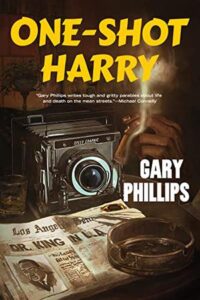
Gary Philips, One Shot Harry
(Soho)
Phillips’ vision of Los Angeles in 1963 comes to vivid life in the form of Harry Ingram, a news photographer and part-time process server who’s putting himself in the firing line all day long as the city’s racial and social divides pull further and further apart. When an old Army friend of his is killed in a car accident, Ingram takes his crime scene photos and his wits on a journey through a deeply corrupt city, looking for the final answers for one man’s death. –DM

Chris Offutt, Shifty’s Boys
(Grove)
Offutt’s powerful follow-up to The Killing Hills is just as rich in atmospherics and a master-class in the craft of crime fiction. Mick Hardin is back in the Kentucky hills, with his sharp military training and his deep family roots leading him inevitably toward a spot of trouble, this time in the form of a local heroin dealer found dead and a mother whose grief can’t accept official disinterest in the case. Offutt has created a wildly compelling private eye series full of memorable characters, drawn with an observant eye and a passion for the local terrain. –DM

Luke Cassidy, Iron Annie
(Vintage Crime/Black Lizard)
Luke Cassidy’s debut is as assured as a third novel, told in the unique and gritty cadences of Dundalk, an Irish border town. Small-time criminal Aoife and her girlfriend Annie are having a good old time doing nothing in particular when they get a surprising opportunity for a vacation: the local dealer, Rat King, wants Aoife and Annie to sell 10 kilos of coke stolen from a rival far from his enemy’s eyes and ears, which leads to a trip to Brexit Britain, and soon enough, some very bad decisions.–MO
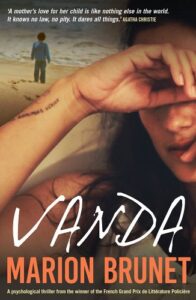
Marion Brunet, Vanda
Translated by Katherine Grigor
(Bitter Lemon)
Marion Brunet’s pitch-black Vanda is seaside noir at its best. Vanda, a single mother in a coastal French town, splits her time between working, parenting, and drinking, until the arrival of an ex disrupts her routine and begins to bring back memories Vanda would rather leave buried. –MO

Maria Gainza, Portrait of an Unknown Lady
Translated from the Spanish by Thomas Bunstead
(Catapult)
In this lavish tale of art and forgery, set in mid-century Buenos Aires, we follow an enigmatic art authenticator who specializes in copying mid-price works and passing them off as originals, and her bored prodigy, who works to solve the mystery of the authenticator’s life. Interspersed are tidbits about the forgery ring’s greatest muse, an aristocratic portrait painter who is easy to copy yet hard to decipher. –MO
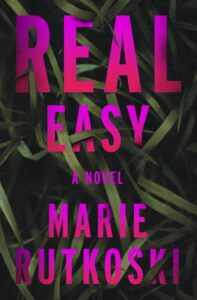
Marie Rutkoski, Real Easy
(Henry Holt)
Real Easy is centered around the complex lives of dancers at the Lovely Lady strip club. When star performer Samantha sets out to drive a drugged-out coworker home, and the car never makes it back, homicide detective Holly is convinced that one of the dancers may still be alive. Set in the last year of the 20th century, and with an end-of-an-era feel to its glossy, suffering setting, Real Easy joins other crime novels in using noir poetry to tell the stories of sex workers. –MO
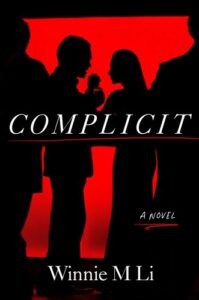
Winnie M. Li, Complicit
(Emily Bestler Books)
Winnie Li stunned the crime and literary worlds with her intense debut, Dark Chapter, based around a traumatic incident in the author’s own life and nominee for the Edgar Award for Best First Novel. Now she’s back with another story that mines her own experiences, this time centered on the toxicity of the film industry. Complicit is both a #metoo thriller and a complex literary achievement that sheds an important light on Hollywood’s darkest secrets and brings an essential and underrepresented perspective—that of an Asian-American film producer—to the fore. –MO
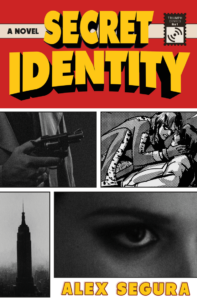
Alex Segura, Secret Identity
(Flatiron)
Alex Segura’s newest novel is a marvel of atmospherics, a vividly imagined glimpse into the world of 1970s comic books in New York City and the mean streets that ran between the office buildings and kept a subculture pumping away. At the story’s heart is a fierce protagonist, Carmen Valdez, who longs to tell her stories with superheroes and is determined not to be pushed aside. When a colleague is killed—and her own participation in an important work is erased—Carmen is forced into the sleuth mode, and the story becomes a clever reinvention of 1970s private eye fiction. The set pieces are intricate and thrilling and the backdrop is lovingly rendered. Secret Identity feels like the novel Segura was born to write. His love of both noir and comics shines through and makes this book one of the most enjoyable, rewarding reads of the year. –DM

Gabino Iglesias, The Devil Takes You Home
(Mulholland)
Gabino Iglesias’s break-out novel is pure noir, as bleak and brutal as they come. A man living a hard-scrabble life on the margins finds himself in need of quick cash after a personal tragedy. He first finds work as a hitman before stumbling across another opportunity—the chance to hijack a narco-convoy coming up from Mexico. Beautifully written and absolutely devastating, The Devil Takes You Home heralds the ascent of a major crime writer. –MO
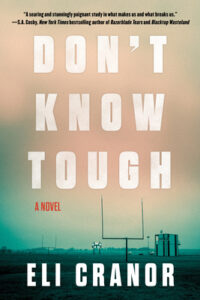
Eli Cranor, Don’t Know Tough
(Soho)
Cranor’s debut novel is one of the most powerful noirs to come along in years, a finely chiseled slice of upended Americana and a deeply felt study in the ties that bind us and tear us apart. Small-town Arkansas football is the setting, so you know the stakes are going to be high, but Cranor brings to his story so many moments of quiet, cutting grace. The dread is allowed to subtly build in the background, until quite suddenly you’re drowning it. The story is built with rugged, overlapping fabrics: the outsider coach, the hard case player with talent and demons, the town and its yearning to win, with all the violence and heartache that implies—all these human moments come together in sensational fashion to yield a story that’s genuinely shocking, told in language that’s rich, compelling, and finely wrought. Cranor shows himself to be a craftsman of the highest order, and an author whose stories we’re going to be anticipating for years to come. –DM

Danya Kukafka, Notes on an Execution
(William Morrow)
Danya Kukafka’s Notes on an Execution deserves to stand along Ivy Pochoda’s These Women, Nicola Maye Goldberg’s Nothing Can Hurt You, and Carolyn Ferrell’s Dear Miss Metropolitan as victim-focused narratives that call out the exploitation of women’s suffering in crime stories. In Notes on an Execution, serial killer Ansel Packer is counting down to his execution. And the women in his life are also counting down. They are also wondering: with a different life, who would Ansel be? More importantly, who would his victims have been, had they clung to life instead? –MO

Dwyer Murphy, An Honest Living
(Viking)
A rain-spattered love letter to a bygone New York, a wry homage to a classic of the genre, and a delightfully meta work of neo-noir, Dwyer Murphy’s brilliantly assured debut is the story of an unwitting attorney-turned-private investigator who gets tangled up in a crime of obsession between a reclusive author and her antiquarian bookseller husband. The mystery is beautifully constructed, the writing crackles on every page, and Murphy’s portrait of early 2000s New York City is nothing short of exquisite. If you’re looking to lose yourself inside a smart, atmospheric literary crime novel this winter, An Honest Living will not disappoint. [Murphy is an editor at CrimeReads, a sister site of Lit Hub’s] –Dan Sheehan, Bookmarks Editor at Lit Hub

















